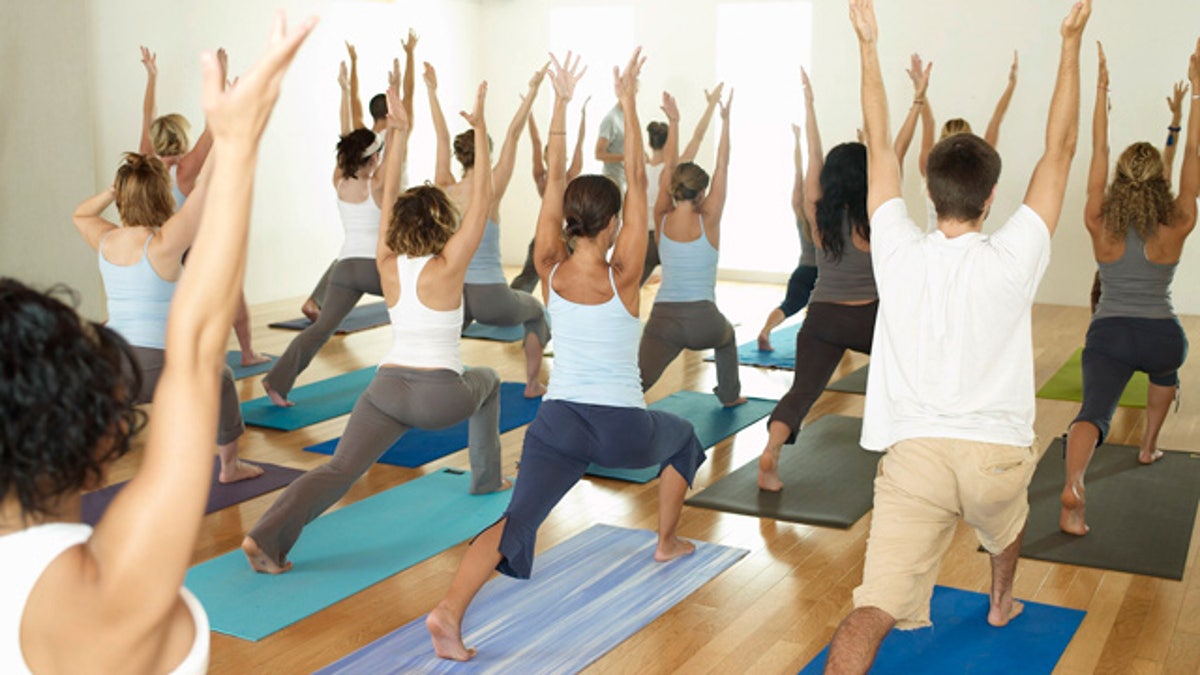
(Reuters)
Doing yoga may help reduce blood pressure among people with hypertension, a new analysis of past studies suggests.
“There is now a growing number of randomized controlled trials on yoga for a variety of medical conditions,” Holger Cramer told Reuters Health in an email.
But, he added, “the quality and expressiveness of these trials varies, thus, it is often difficult to evaluate the real evidence for the usefulness of yoga in a specific condition based on single trials.”
Cramer led the review at the Faculty of Medicine at University of Duisburg-Essen in Essen, Germany.
Previous studies have suggested yoga may be beneficial for a number of health conditions, including irregular heart rhythms and posttraumatic stress disorder (see Reuters Health stories of January 30, 2013 here: reut.rs/1jawFIW and April 18, 2014 here: reut.rs/1hYvQY9).
Cramer said he has published reviews on yoga for low back pain, breast cancer, schizophrenia, depression, menopausal symptoms, cardiovascular risk factors, heart disease, asthma and rheumatic diseases.
“The current review on yoga for hypertension is part of this ongoing project. In my opinion, since yoga is widely used all over the world for a number of health issues, it is of crucial importance to scientifically evaluate where it is useful - and where it is not,” he said.
The findings were published in the American Journal of Hypertension.
Cramer and his colleagues combined the results of seven previous studies that included 452 patients. In each of those studies, people with high or borderline-high blood pressure were randomly assigned to practice yoga for at least eight weeks or to get usual blood pressure care or another type of treatment instead.
The researchers found that on average, yoga reduced systolic blood pressure (the top number in a blood pressure reading) by about 10 mm Hg and diastolic blood pressure (the bottom number) by 7 mm Hg, compared to usual care.
When they looked only at patients with full-blown hypertension - leaving out those with only slightly elevated blood pressure, or “prehypertension” - the reduction in blood pressure was even greater.
“We did, however, not find any effects in pre-hypertensive patients,” Cramer said.
The National Institutes of Health defines high blood pressure as 140/90 mm Hg and above. Normal blood pressure is below 120/80 mm Hg, and prehypertension is anything in the middle.
The review also found that yoga helped patients who were taking blood pressure medication at the same time, but not those who used it as an alternative to drugs.
However, the studies included in the review varied in ways that made it difficult to evaluate the big picture of yoga’s effect on blood pressure, the researchers said.
Two studies looked at specific yoga styles. One exclusively examined the effect of yoga breathing techniques, and the rest involved some combination of yoga postures and breathing techniques, relaxation, meditation and lifestyle advice.
“While these findings are limited by the few available trials, we found that yoga breathing seems to be more effective and safer in persons with hypertension than more physically-oriented yoga forms,” Cramer said.
The researchers also looked at the safety of yoga and found three adverse reactions were reported in one of the studies. But it did not specify what those involved.
Other studies have suggested that strains of the neck, shoulders, legs and knees are common yoga injuries.
“An issue that is really important and generally underrepresented in yoga research is the evaluation of the safety of the intervention - in order to be able to precisely balance potential benefits and potential harms for each individual patient,” Cramer said.
The lack of consistency between studies, and limitations in the research methods they employed, means more research is needed, he said.
“It is really important to have large, well-designed trials available that fulfill the standards of today’s biomedical research,” he said. “It might be worthwhile to conduct some more trials that compare yoga to other forms of physical activity.”
Cramer recommends that people interested in yoga look for a style that incorporates breathing techniques and relaxation with yoga postures and look for a yoga teacher who has experience working with people who try yoga for medical reasons.
“A licensed yoga therapist would be the best choice if available,” he said.
Cramer added that patients should not stop taking their blood pressure medication and should not to be too aggressive with their yoga practice.
“Respect your limits; yoga is not about achievement and it should be practiced mindful,” he said.
